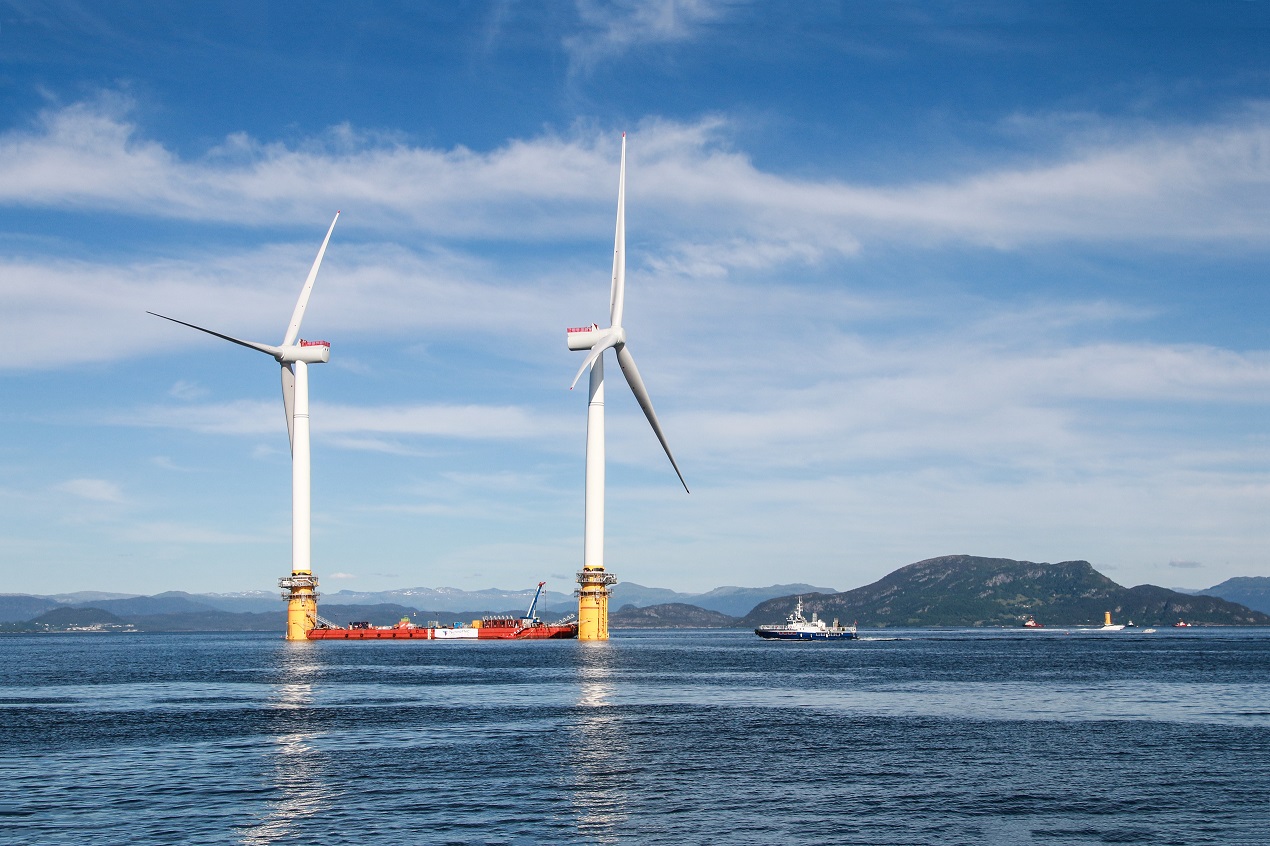How is international rivalry driving green industrial policy? The European response to the US Inflation Reduction Act
Published on 9th Feb 2023
The Act has fundamentally changed the terms of debate on clean energy funding and supply chains in the US and in Europe

"The most significant action Congress has taken on clean energy and climate change in the nation’s history." That's how the White House describes the US Inflation Reduction Act (IRA), which was signed into law by President Biden on 16 August 2022.
The IRA will channel $370 billion of federal spending – mainly in the form of tax credits, loan guarantees and grants – to promote American domestic manufacturing through the clean energy supply chain and drive "the development and commercialisation of new green technologies". In the words of the White House's "Inflation Reduction Act Guidebook", those investments will:
"…lower energy costs for families and small businesses, accelerate private investment in clean energy solutions in every sector of the economy and every corner of the country, strengthen supply chains for everything from critical minerals to efficient electric appliances, and create good-paying jobs and new economic opportunities for workers."
The concern among European politicians and policymakers is that this enormous programme, which sits alongside the clean energy provisions of the US Infrastructure Investment and Jobs Act of 2021, will incentivise developers and manufacturers to locate investments in the US and away from Europe.
A snapshot of clean energy in the Inflation Reduction Act
The IRA runs to 274 pages, and addresses healthcare and other tax issues as well as renewables and climate. On clean energy, here is just a flavour of some of its provisions:
- Manufacturing of solar panels, wind turbines, batteries, biogas, geothermal plants and critical minerals processing: $30 billion of tax credits
- Supporting heavy polluters in industrial manufacturing (steel, chemicals, cement) to reduce emissions: approaching $6 billion of tax credits and grants
- Developing electric vehicle manufacturing and renewable energy technologies: $10 billion in tax credits
- Assisting utilities in transitioning to clean energy: $30 billion in grants and loans
- Developing green hydrogen and other sustainable and alternative fuels: more than $10 billion of tax credits
- Cutting agricultural emissions: $20 billion
- A "green bank" to support clean energy projects: $27 billion.
Several of these tax credit programmes run for up to ten years. This provides "planning certainty" for researchers, developers and manufacturers.
There are also incentives for individuals and households, including a tax credit of up to $7,500 for the purchase of a clean vehicle, and rebates of up to $9 billion to support the electrification of homes and the fitting or retrofitting of energy efficient appliances.
A very important aspect of the IRA is that it incentivises developers and manufacturers to use and produce components and equipment within the US domestic supply chain and, in some cases, to source only from the US or from countries with whom the US has a free trade agreement.
The European reaction to the IRA
Unsurprisingly, given the generous funding on offer, there have been various anecdotal accounts of European manufacturers planning to locate new investment in the US, or even to move existing facilities, in order to benefit from its provisions.
This has in turn prompted a political reaction. In a visit to Washington in December 2022, President Macron of France described the IRA's subsidies as "super aggressive". In the same month, it was reported that Margrethe Vestager, the European Competition Commissioner, thought the law could be "very damaging" for European business. The EU also views the IRA's "local content" requirements as potentially in breach of World Trade Organization rules.
In a sign of the concern felt at the highest levels of European governments, the French and German economy ministers travelled to Washington to discuss their view that the Act could spark a “bidding war on subsidies", and to argue that its implementation should include EU components and fewer local content stipulations.
Some commentators have detected a potential irony in European policymakers – after years of seeing and addressing the US as a laggard in acting on climate change – now being worried by the financial weight of the IRA's green manufacturing measures, although the European Commission president has welcomed the IRA as "…good news. We have long since argued that the fight against climate change is a must".
Nevertheless, its perceived risks to the development of an EU clean energy industry are now driving an EU policy response.
The European Commission's proposals
On 1 February 2023 the Commission proposed its "Green Deal Industrial Plan" which, with its aim of "enhanc[ing] the competitiveness of Europe's net-zero industry" has clearly been developed, at least in part, in response to the IRA. The plan has four pillars.
Relaxation of state aid rules to drive funding
The Commission proposes temporarily increasing state aid to "speed up investment and financing for clean tech production in Europe".
This would require a relaxation of existing EU state aid rules, and that is has always been controversial, given the concerns of some Member States that state aid enables larger Member States to subsidise their domestic industries to the detriment of players elsewhere in the EU, as well as the EU's general advocacy of free trade. That debate will feature at today's EU summit which will consider the Commission's plans.
A 'Net-Zero Industry Act'
The Commission will propose a Net-Zero Industry Act to "provide a regulatory framework suited for [the] quick deployment" of net-zero industrial capacity – the time delay and bureaucratic procedures which large-scale renewable and clean energy projects encounter in the EU are long-standing problems – as well as a "Critical Raw Materials Act", to ensure "sufficient access to those materials, like rare earths, that are vital for manufacturing key technologies".
Skills
Few good Commission plans are complete without an emphasis on the vital area of improving skills, and the plan is no different: "To develop the skills for a people centred green transition the Commission will propose to establish Net-Zero Industry Academies to roll out up-skilling and re-skilling programmes in strategic industries."
Free trade and supply chains
Perhaps pointedly, the plan's fourth pillar "will be about global cooperation and making trade work for the green transition, under the principles of fair competition and open trade, building on the engagements with the EU's partners and the work of the World Trade Organization".
The Commission's plan has multiple parts and, for the most part, long timeframes. The extent to which it finds approval from Member States – and the state aid provisions at least will be controversial – will become apparent in the next few weeks.
Is there a UK response?
A post-Brexit UK is not constrained by EU state aid rules and so in theory is able to create an independent response to the IRA (subject to its international subsidy commitments, for example, under the UK-EU Trade and Cooperation Agreement, the Northern Ireland Protocol and as a result of its WTO membership).
UK business leaders have been calling for the UK to "up its game", noting that the UK cannot compete with US and EU subsidies. So far, the response has been muted. The UK's chancellor, Jeremy Hunt, has been reported as saying he had "some concerns" about the Inflation Reduction Act but so far the policy response from the UK has been muted. Eyes now turn to the announcements that will be made in the UK's budget on 15 March 2023 and the delivery by the newly created Department for Energy Security and Net Zero.
Our Head of Decarbonisation, James Watson, has written in BusinessGreen with a wider perspective what the UK needs to do to meet its climate targets.
Osborne Clarke comment
The Inflation Reduction Act has fundamentally changed the terms of debate on clean energy funding and supply chains in the US and in Europe.
Although in some ways a dramatic break from recent (or at least pre-Biden) US industrial and fiscal policy, it can also be seen within the longer historical tradition of US state support for infrastructure, industrialisation and new technologies, stretching from the early highways programmes though the "space race" to more recent advances such as touch screens and global positioning systems. It is already driving an increase in clean energy and renewables investment in the US.
For the European Union, the IRA is a challenge. The EU lacks one of the most important tools deployed by the IRA – tax breaks (a Member State competence) – and with currently limited funding options (although this is under discussion at the EU summit today) at Commission level, it cannot match the grants and subsidies which the IRA offers. So, despite the Commission's plan, it is not surprising that senior politicians from the larger Member States are making their way to Washington to try and persuade the Biden Administration not to make the IRA, in their view, "American only".






